Hunt for Heritage in Goa – Part 1
Destination Goa attracts the most tourists from anywhere in the world that visit India. And these folks flock here for its long coastline that offers a variety of beach experiences ranging from the usual sun, sand, and surf to water sports, dolphin watching, exotic seafood, local brew Feni, and more. What most travellers ignore during their visit is the rich history of this coastal gem.
The Portuguese ruled Goa from the early 16th century to the mid-20th century. It was the true wild west of India, always under the threat of an attack from the sea by the marauding Dutch, British, Spanish, and other armadas, and from within the land by the valiant Marathas. Small wonder the forts and fortresses dot this coastal state – some of them intact, the others in ruins.
This Portuguese influence extends beyond these forts to some residential areas too, like Fontainhas in Panjim. Besides that, the archeologists found the first signs of life in India in Goa, at Mauxi and Usgalimal. Very few signs exist, but these are from the prehistoric era. And then there are Harvalem (Arvalem) caves. These 6th-century caves are also called Pandava caves since there are 5 chambers.
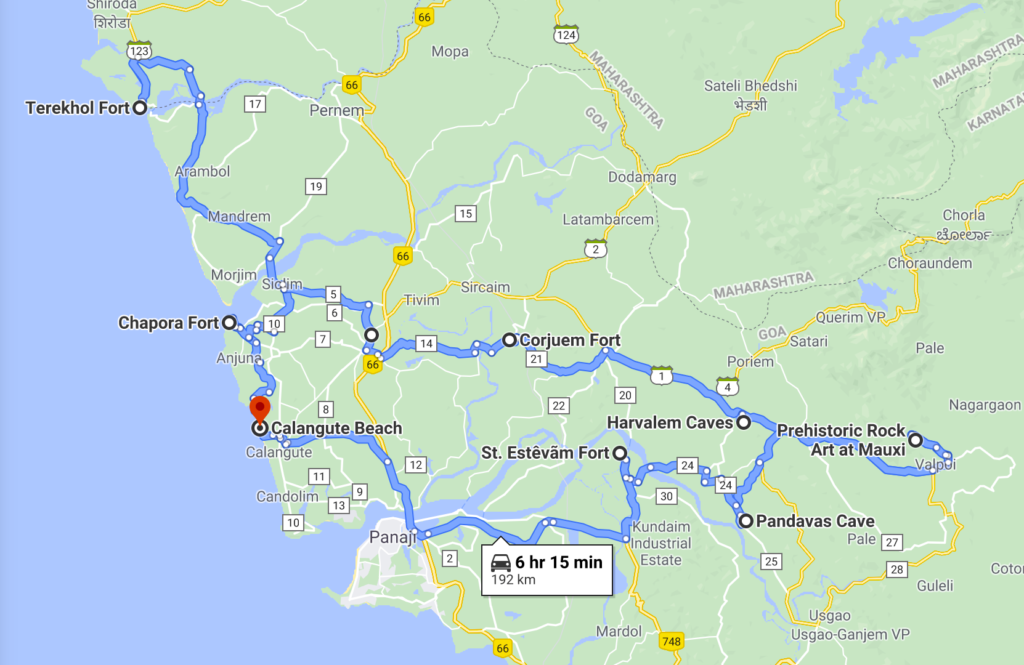
Through this and the following post, I’ll share two distinct itineraries to help you plan your hunt for heritage in Goa. Assuming you’ve made Calangute Beach your base in Goa, the first itinerary takes you north and east of Calangute. And the second, southeast and south of Calangute. Get set to experience some exquisite heritage gems.
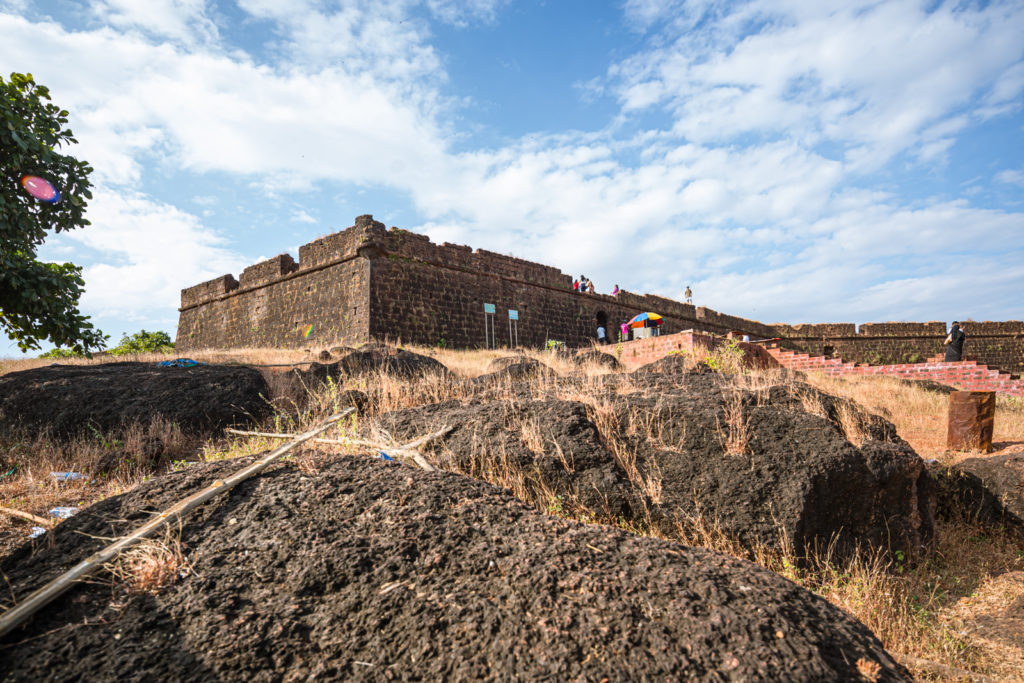
Forts and Fortresses
An early start from Calangute and an 8.5-km drive will take you to Chapora Fort in Vagator. More popular by the name of ‘Dil Chahta Hai’ Fort, by virtue of the cult movie shot here. It was built by a Muslim ruler Adil Shah and was originally called Shahpura. Portuguese rechristened it Chapora (pronounced Shapora). The fort has a see-saw history of having changed hands from the Marathas to the Portuguese to the Mughals, and back, a few times over. While only the ruins of the wall remain, it is a popular haunt for the locals and travellers.
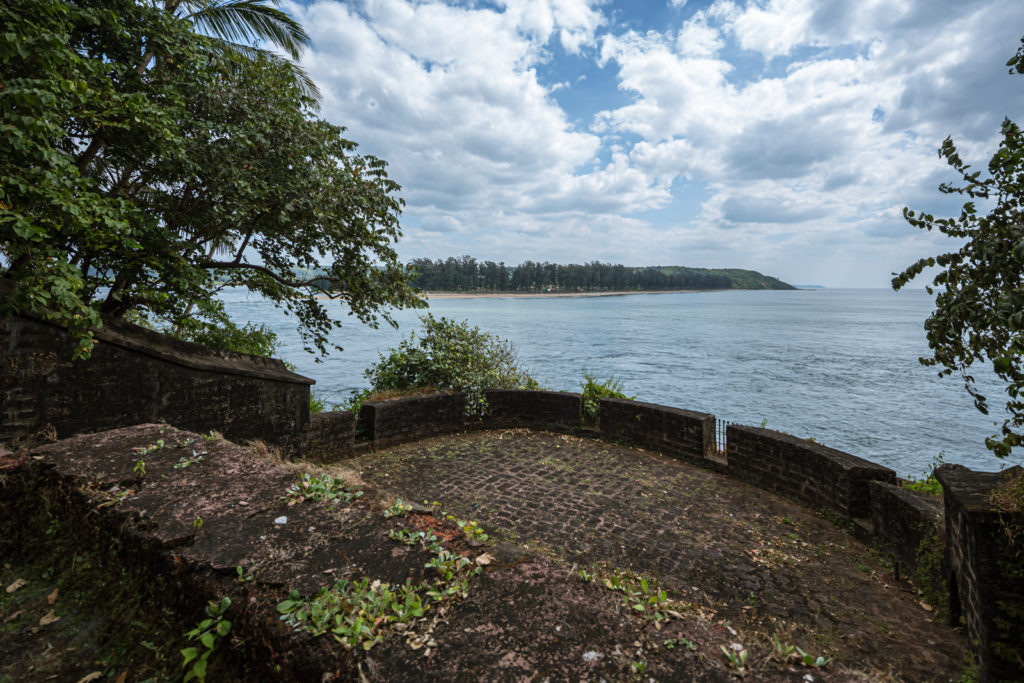
From here, hurry down, and drive off to Tiracol Fort. This drive will amuse you as you go all the way up north, cross over to Maharashtra, and then loop back into Goa. This 17th-century fort was a crude encampment during the King of Sawantwadi’s reign. After the Portuguese occupied it, they revamped it during the late 18th century. All you find here is a massive bastion that juts into the sea, barracks, and a chapel. Barracks now have metamorphosed into a boutique luxury hotel with 7 rooms named after the days of the week.
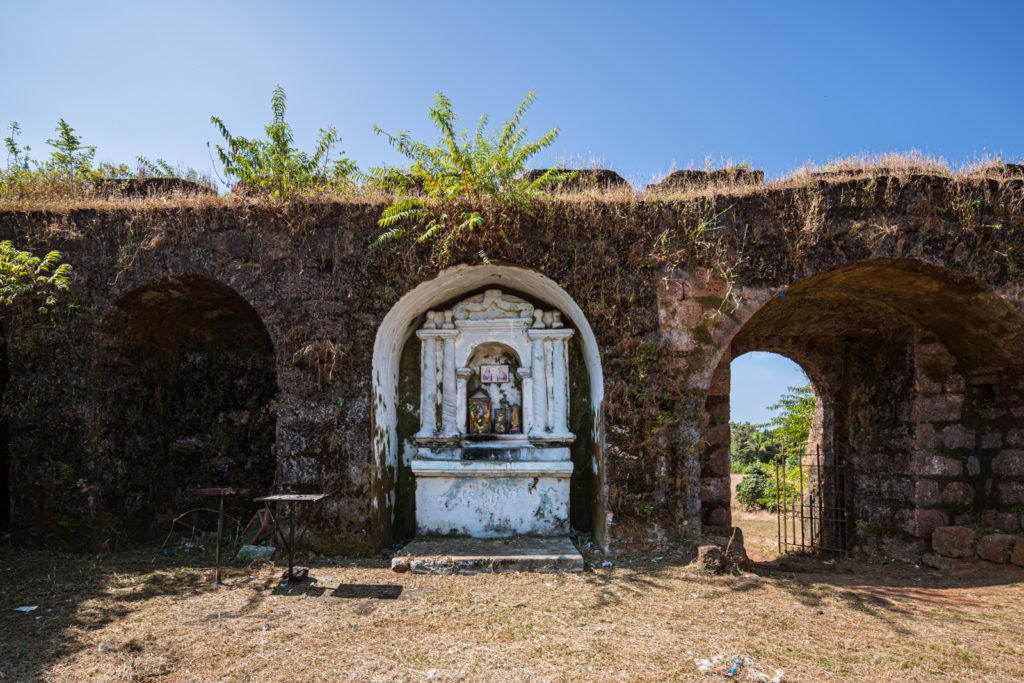
Next stop – Corjuem Fort. It is located almost 50 km. southeast from Tiracol. While many forts are along the coast, a few also exist inland. Corjuem is one such inland fort. A river island fortress, just 4 kilometres from village Aldona, it was built in the early 18th century. The fort defended the Portuguese from the Marathas, Bhonsles, and the Rajput Ranes who had set up camps just across the river. It also acted as the first line of defence for Panjim.
Hunt for Heritage in Goa – Beyond Forts
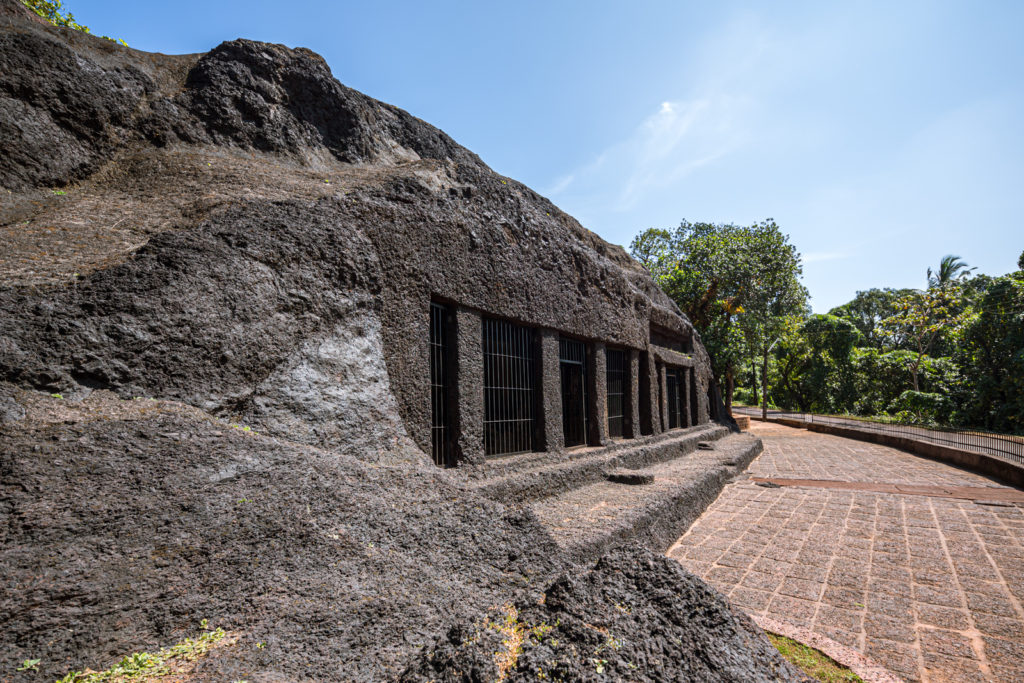
From here, a short 18-km drive will take you to Harvalem (Arvalem) Caves. Dating back to the 6th century CE, people believe travelling Buddhists carved these. Though, presence of the Shiva Lingas reflects their brahmin origin or conversion to Shaivite caves. The lower part of these lingas have characters in Brahmi script carved on them. A few hundred metres further up, just past the Rudreshwar temple is Arvalem Falls, a scenic, idyllic spot to relax.
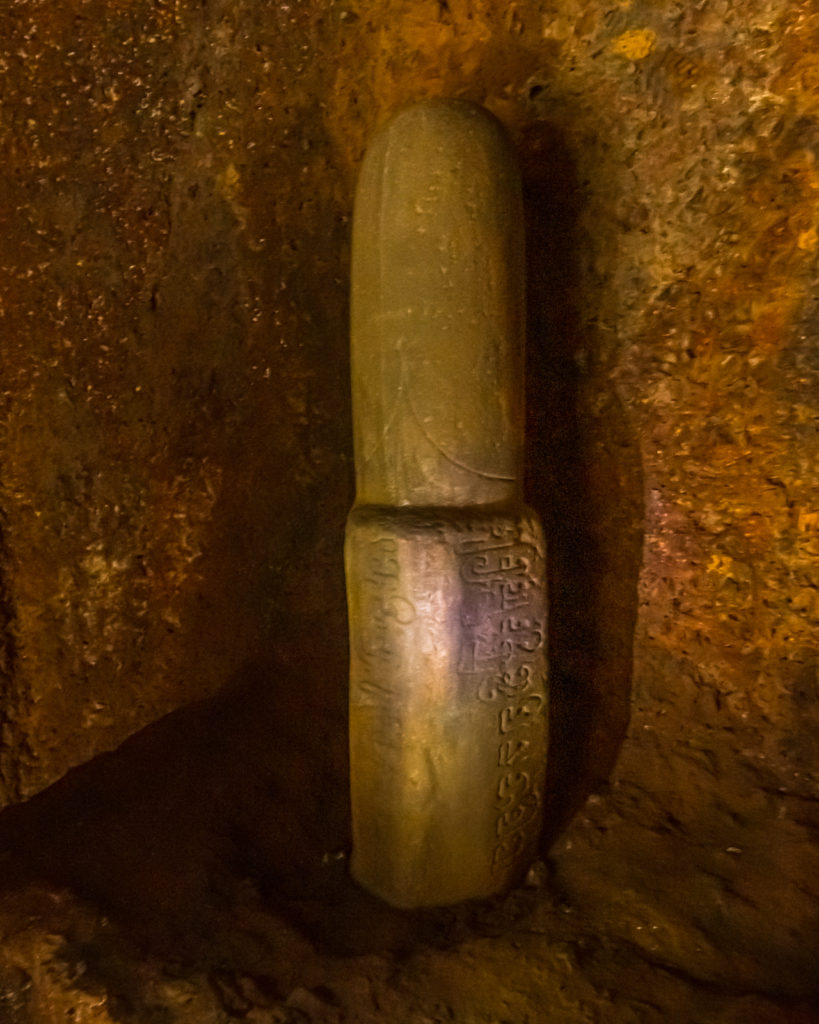
Further east, after another 18 kilometres, you reach Mauxi prehistoric stone engravings and petroglyphs. These telltale signs at Mauxi are one of the first signs of life in the Indian subcontinent. The engravings at Mauxi, found on the rocks by the banks of a seasonal river Zarme (a tributary of Velus River), reflect the prehistoric man had already invented tools and implements like chisel and hammer.
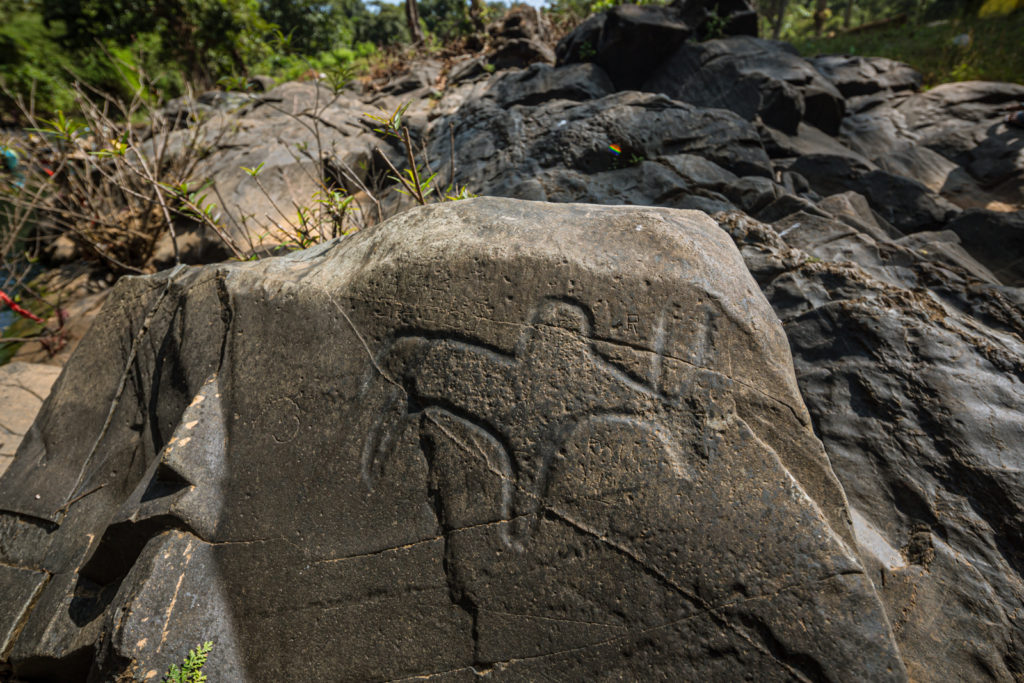
From Mauxi, the spot furthest east on this itinerary, you drive back. A revered cave temple of Siddhanath lies 22-km west of Mauxi. Even this spot is called Pandavas Caves. This cave temple has a swayambhu (self-manifested) Shiva Linga, and people from the locality come and pray here even today.
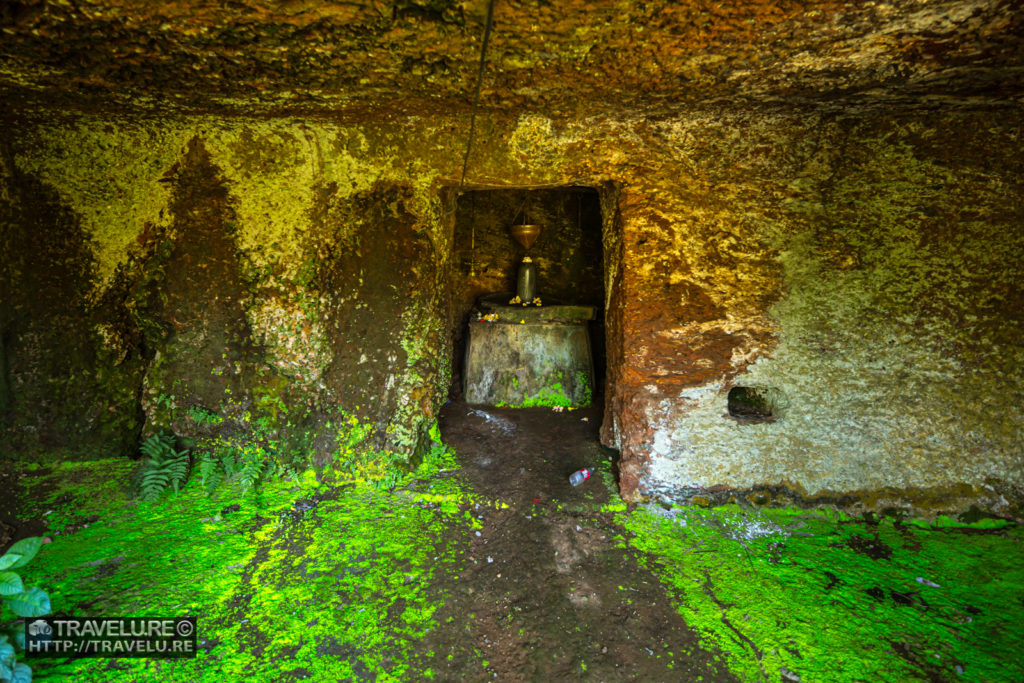
Back to a Fort
As you continue your drive back, you would reach a village in Tiswadi (thirty settlements). Here, up a narrow unpaved path, you find St. Estevam Fort. It is another river island fortress. Built in 1668, they also call it the fort of Saint Francis Xavier. The vantage of the fort offered a view of the entire landscape – plains on one side, and the river on the other.
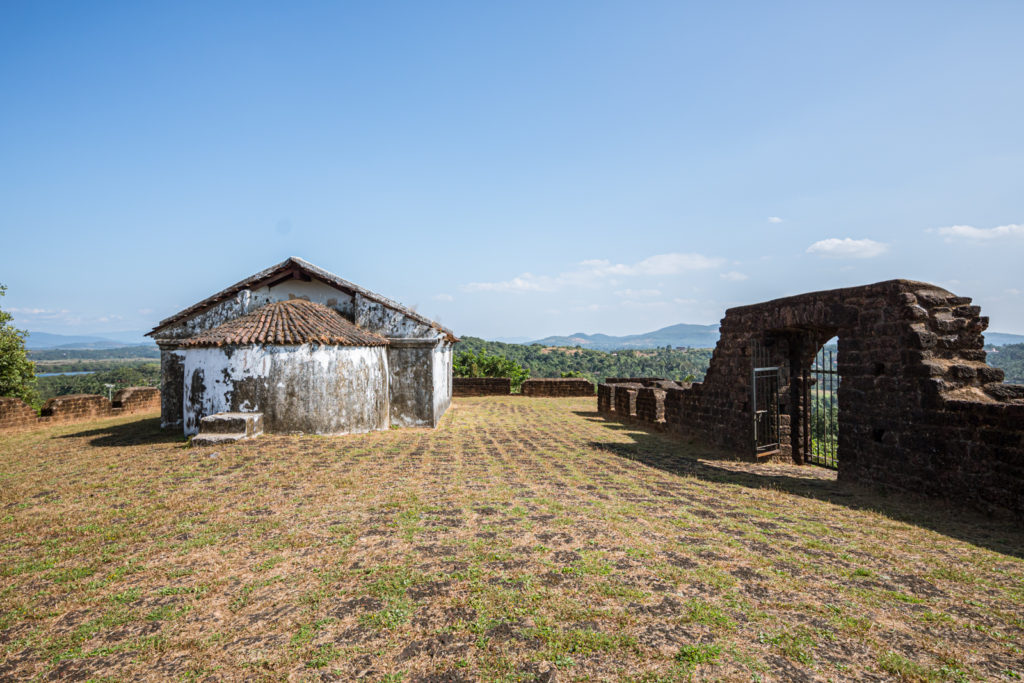
By now, I am positive you’d feel enriched discovering the lesser-known and lesser-visited heritage landmarks of Goa. And a comfortable 1-hour drive will bring you back to your touristy base.

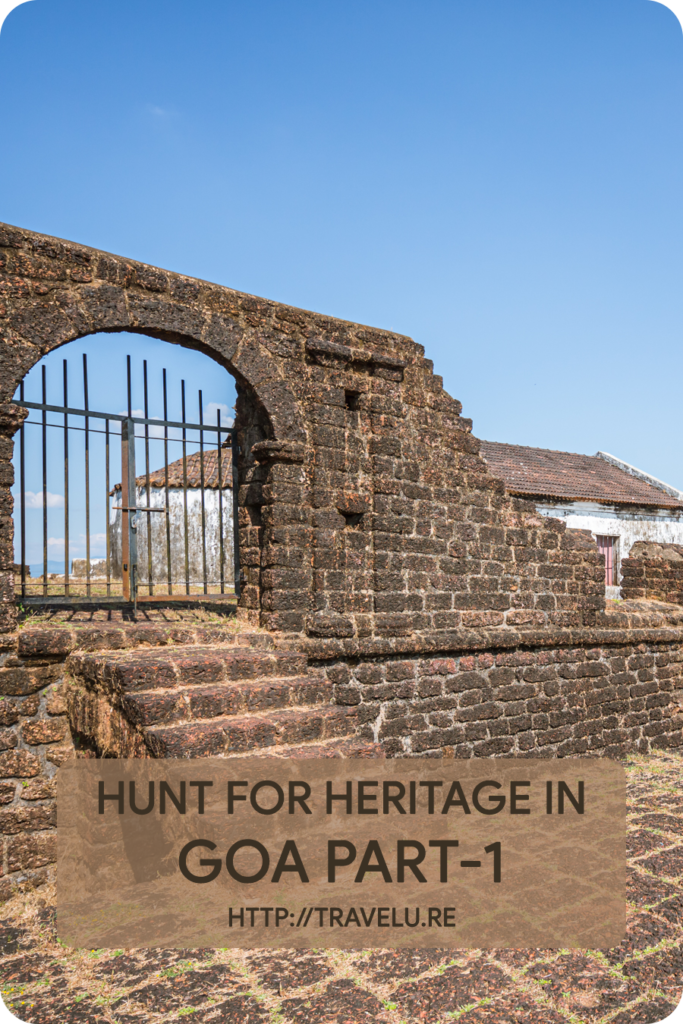
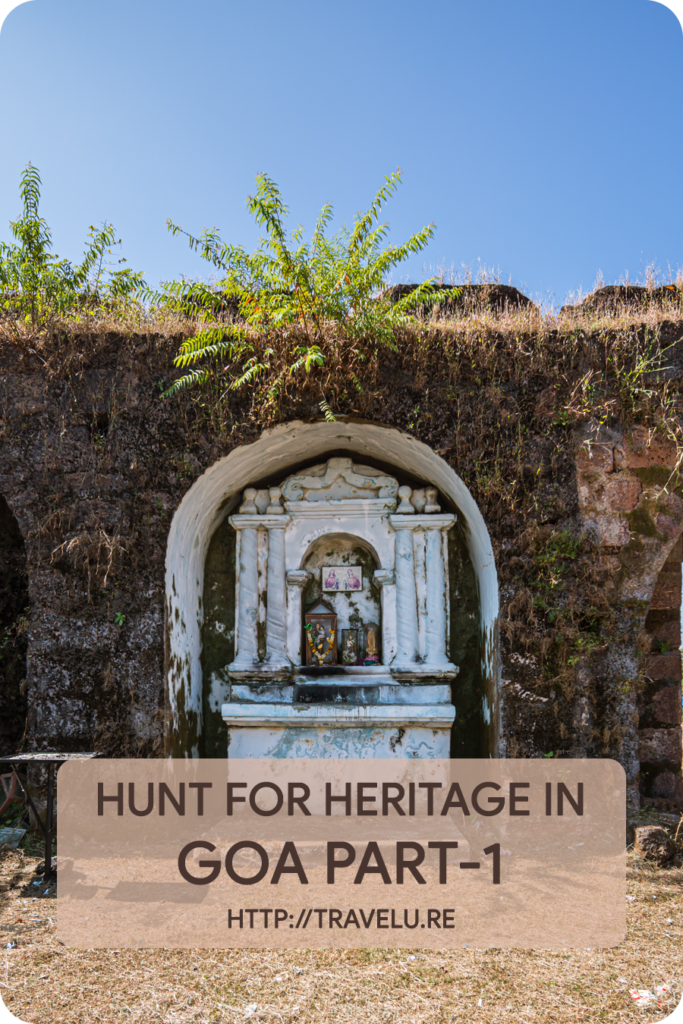
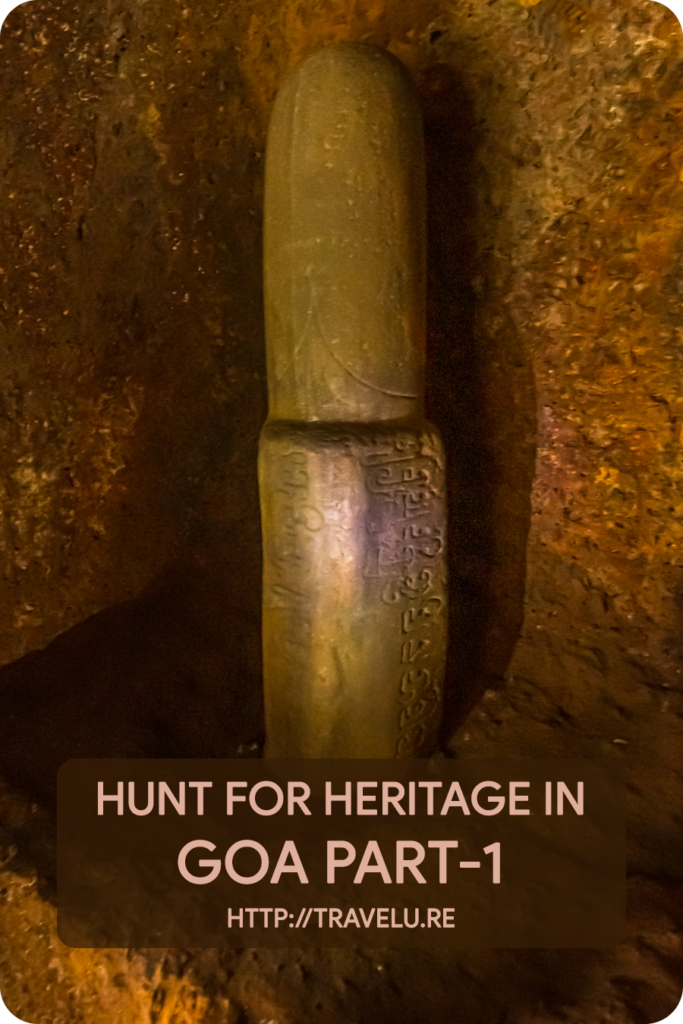
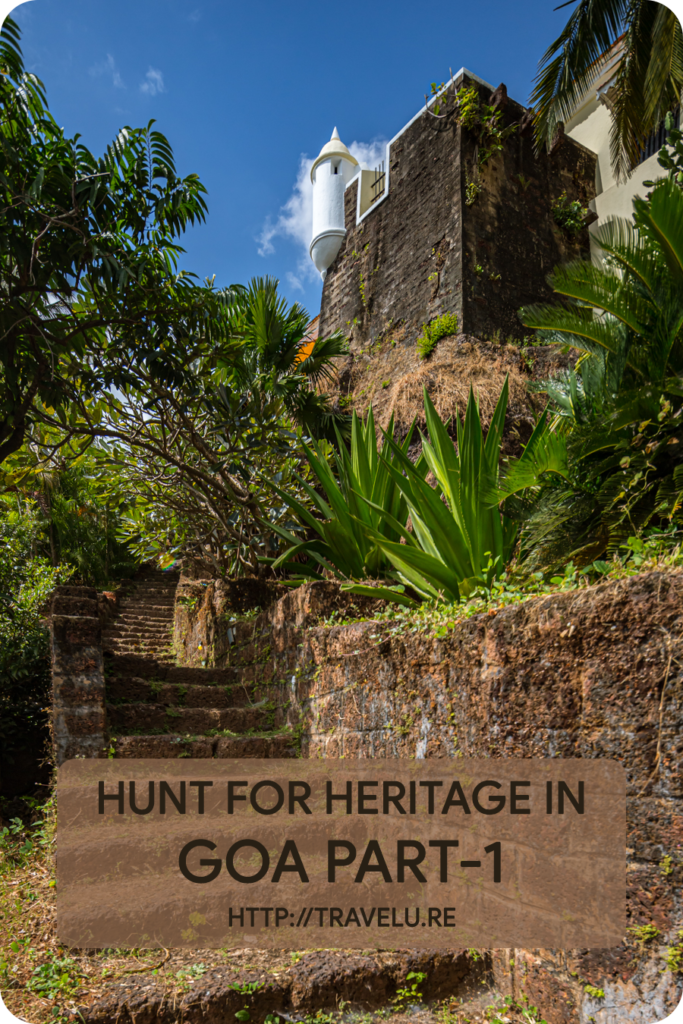
















I am finding this photo in my village
Which photo, S praveenkumarReddy?